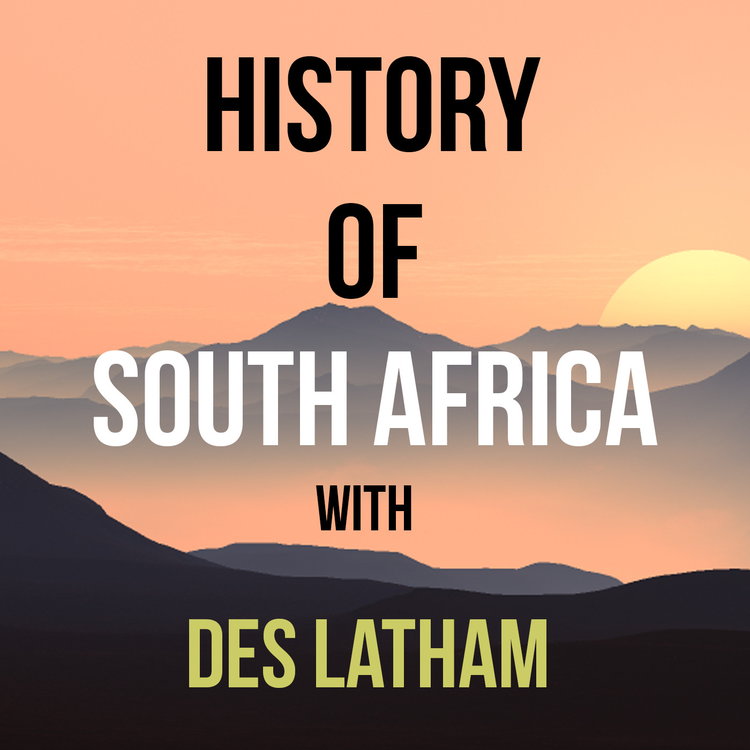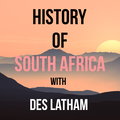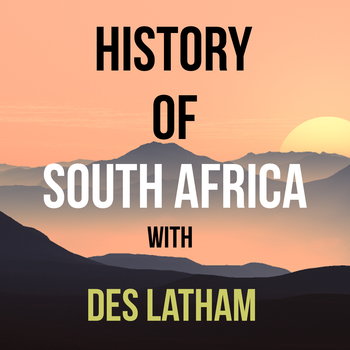
Episode 232 - Diamond Geology as an Art, Dinosaur Veldskoene and Waterboer’s Claim
Loading player...
This is episode 232 - Diamond Geology as an Art, Dinosaur Veldskoene and Waterboer’s claim
Just a quick note about that amazing podcaster Nicole Engelbrecht —She is the host & creator of True Crime South Africa and the author of Samurai Sword Murder, Sizzlers, and co-author of Killer Stories. Well now there’s another book in her growing body of work called Bare Bones, Cold Cases from True Crime South Africa as part of the Jonathan Ball stable.
I’ve been given view of an advanced copy and its chilling — perfect to read on a frozen winter’s night in front of a fire.
Right. 1870.
By the start of the year there were about 1000 diggers near the Vaal River, hunting diamonds, at the end of that year the number had risen ten to 10 000. They made their way to the area from around the world, once landing in Cape Town or Algoa Bay, and some in Durban, they’d travel up to the river diggings taking two months, or six weeks if they were lucky. Once there, they’d set up camp, pitching tents, building little shanties, or living in their wagons. These global prospectors first headed for the largest of these camps - a place called Klipdrift, which eventually became the town of Barkley West, about 35 kilometers north west of Kimberley.
The new Eldorado as it was being called saw men dressed in what was called a proper digger’s outfit. This consisted of a broad-brimmed hat, a corduroy suit, a stout waste belt with pockets all around, extra strong boots, a bowie knife, a revolver, and spare rounds of ammunition.
They’d have to secure their seat from the ports to the dry uplands, preferably in a Bullock-wagon or some in the Cape Scotchcart, drawn by horses. They were riding shotgun or at the back along with around three tonnes of goods consigned to the camps because everything had to be transported in. There was virtually no local food available, even water had to be carted from higher up the Vaal. It took forty days to trek to the diggings, with many holdups including a fairly lengthy delay at Bethulie in order to cross the mighty Orange River.
The River diggings stretched about 40 kilometres west and northwest towards Delportspoort.
The rush to gather alluvial diamonds along the rivers had begun along both banks of the Vaal River. The rise and fall of this important waterway had washed thousands of these gems onto the surface in channels — both current and ancient.
So who owned that land?
Griqualand West Captain Nicholas Waterboer believed it was his. The Griquas here were uneasily exposed in a salient of territory, a kind of peninsular on a map, projecting into the Orange Free State, across the Vaal River, and to the west, abutting the Tswana Territories of the Kalahari.
The diamond discoveries sent shockwaves through every corner of South African life, with the sciences feeling the first jolt. Geology and mineralogy suddenly mattered in a way they hadn’t before, as men sought to read the land for clues to its hidden riches. But at the root of it all lay something deeply human — an eternal hunger for instant treasure. It’s the same impulse that drives a gambler to scratch a card or chase a lottery win, that rush of endorphins when chance seems to offer everything. Or when a pan yields a diamond worth thousands.
Just a quick note about that amazing podcaster Nicole Engelbrecht —She is the host & creator of True Crime South Africa and the author of Samurai Sword Murder, Sizzlers, and co-author of Killer Stories. Well now there’s another book in her growing body of work called Bare Bones, Cold Cases from True Crime South Africa as part of the Jonathan Ball stable.
I’ve been given view of an advanced copy and its chilling — perfect to read on a frozen winter’s night in front of a fire.
Right. 1870.
By the start of the year there were about 1000 diggers near the Vaal River, hunting diamonds, at the end of that year the number had risen ten to 10 000. They made their way to the area from around the world, once landing in Cape Town or Algoa Bay, and some in Durban, they’d travel up to the river diggings taking two months, or six weeks if they were lucky. Once there, they’d set up camp, pitching tents, building little shanties, or living in their wagons. These global prospectors first headed for the largest of these camps - a place called Klipdrift, which eventually became the town of Barkley West, about 35 kilometers north west of Kimberley.
The new Eldorado as it was being called saw men dressed in what was called a proper digger’s outfit. This consisted of a broad-brimmed hat, a corduroy suit, a stout waste belt with pockets all around, extra strong boots, a bowie knife, a revolver, and spare rounds of ammunition.
They’d have to secure their seat from the ports to the dry uplands, preferably in a Bullock-wagon or some in the Cape Scotchcart, drawn by horses. They were riding shotgun or at the back along with around three tonnes of goods consigned to the camps because everything had to be transported in. There was virtually no local food available, even water had to be carted from higher up the Vaal. It took forty days to trek to the diggings, with many holdups including a fairly lengthy delay at Bethulie in order to cross the mighty Orange River.
The River diggings stretched about 40 kilometres west and northwest towards Delportspoort.
The rush to gather alluvial diamonds along the rivers had begun along both banks of the Vaal River. The rise and fall of this important waterway had washed thousands of these gems onto the surface in channels — both current and ancient.
So who owned that land?
Griqualand West Captain Nicholas Waterboer believed it was his. The Griquas here were uneasily exposed in a salient of territory, a kind of peninsular on a map, projecting into the Orange Free State, across the Vaal River, and to the west, abutting the Tswana Territories of the Kalahari.
The diamond discoveries sent shockwaves through every corner of South African life, with the sciences feeling the first jolt. Geology and mineralogy suddenly mattered in a way they hadn’t before, as men sought to read the land for clues to its hidden riches. But at the root of it all lay something deeply human — an eternal hunger for instant treasure. It’s the same impulse that drives a gambler to scratch a card or chase a lottery win, that rush of endorphins when chance seems to offer everything. Or when a pan yields a diamond worth thousands.

